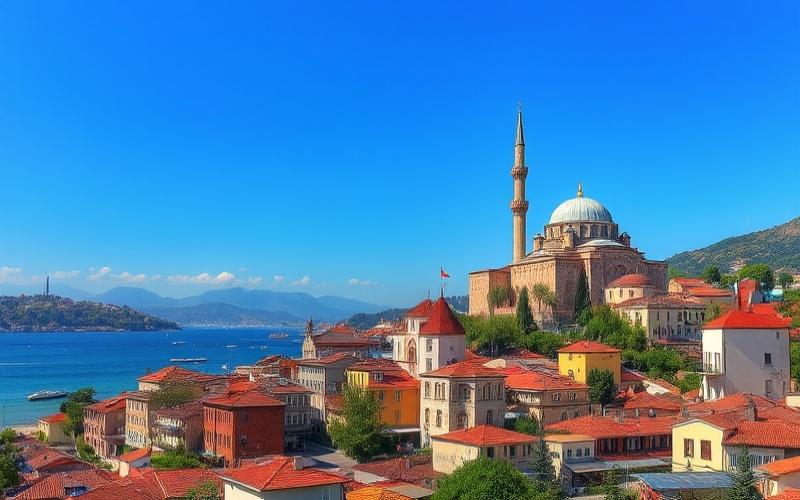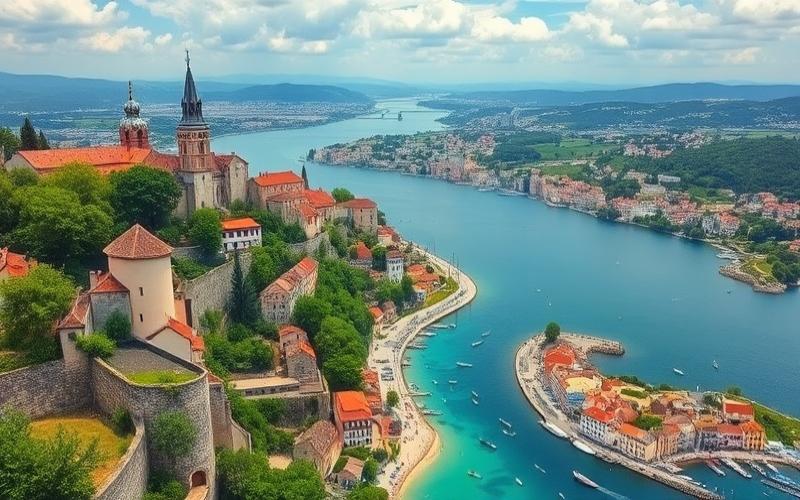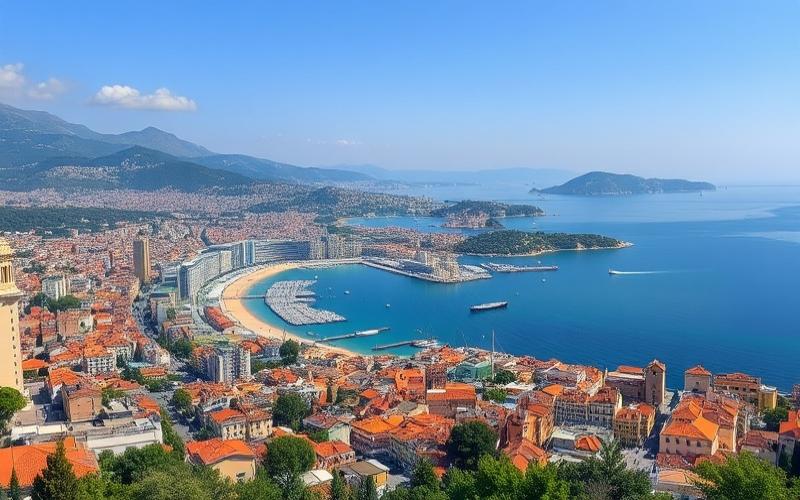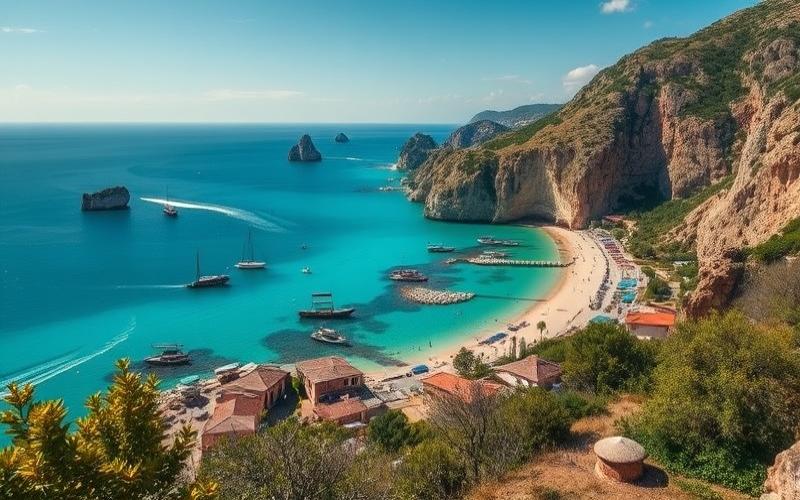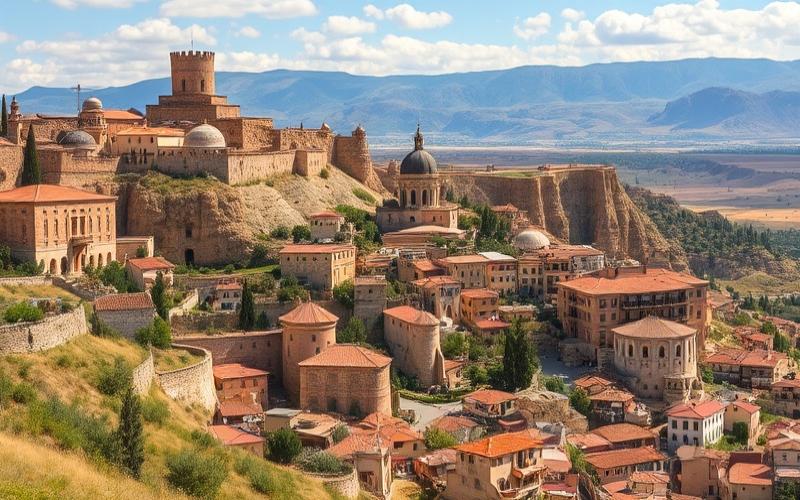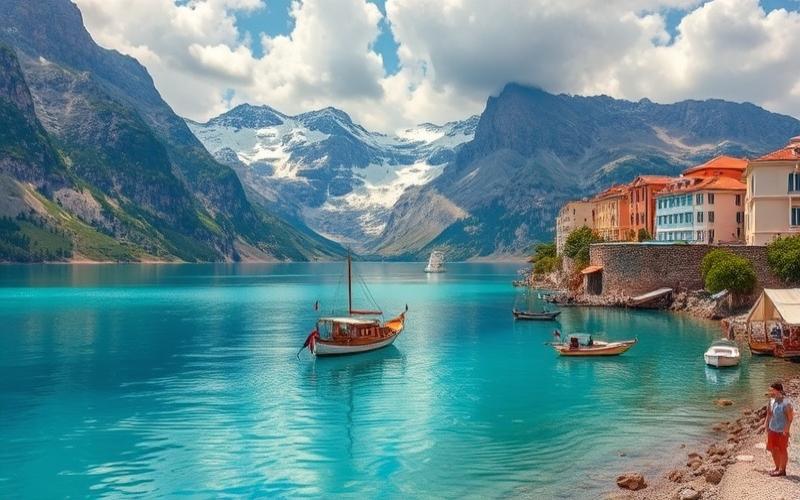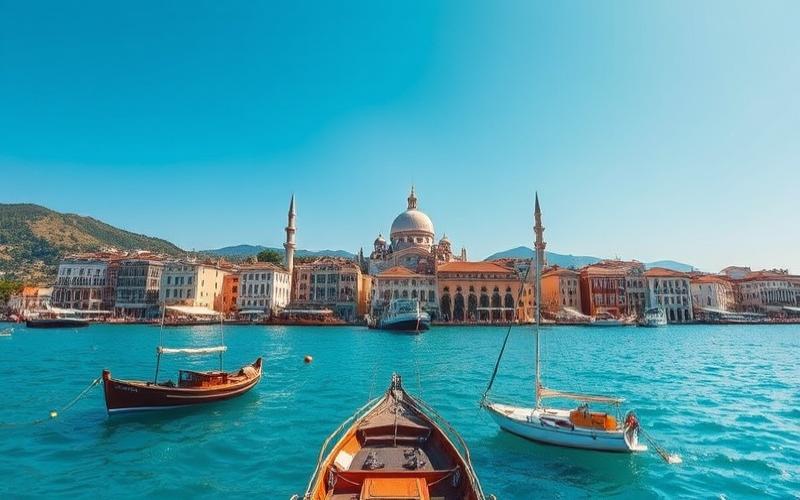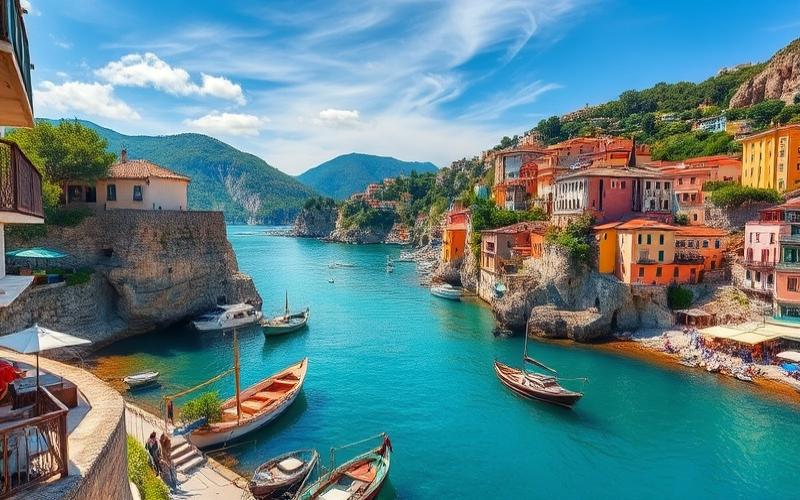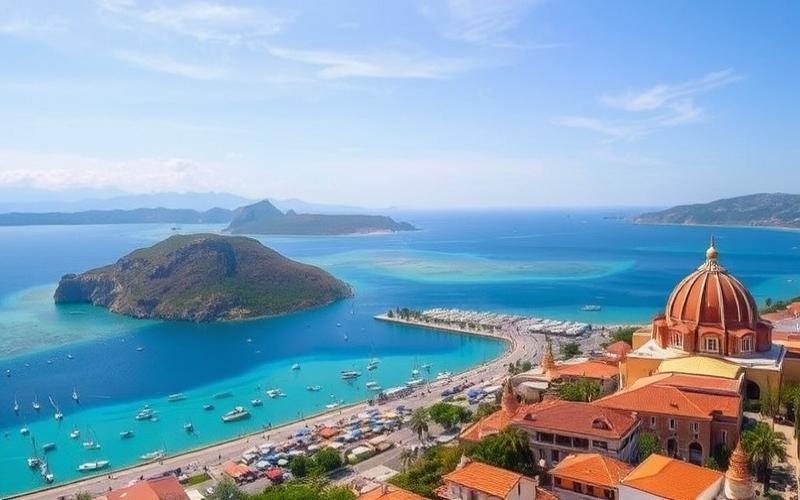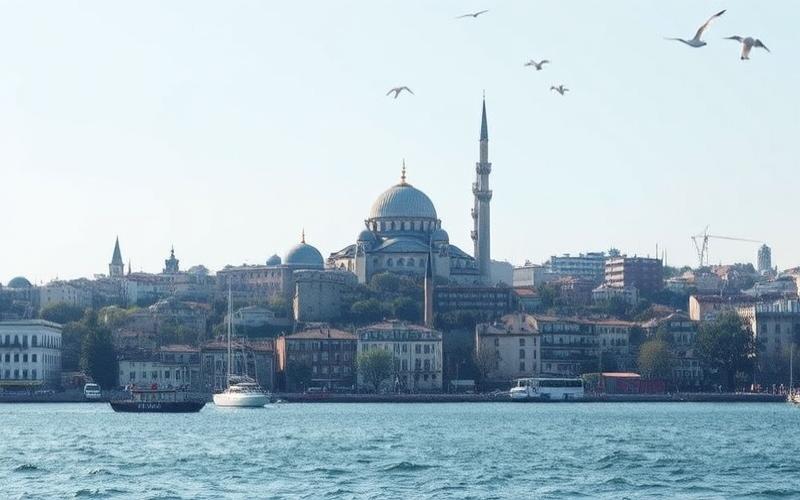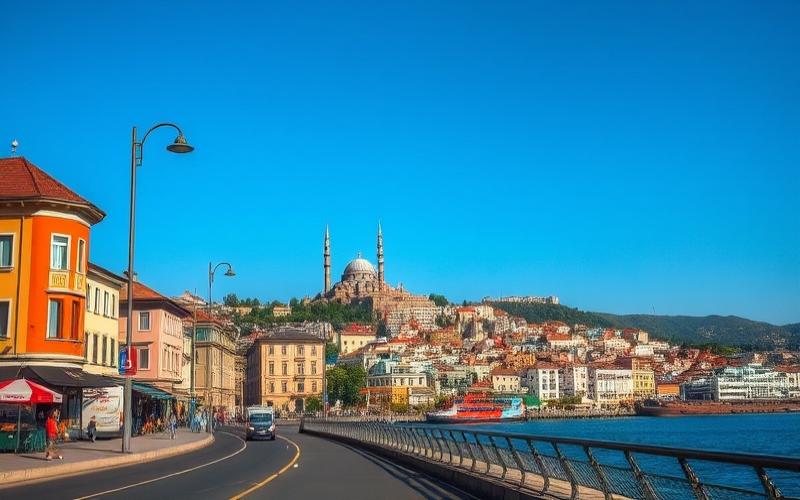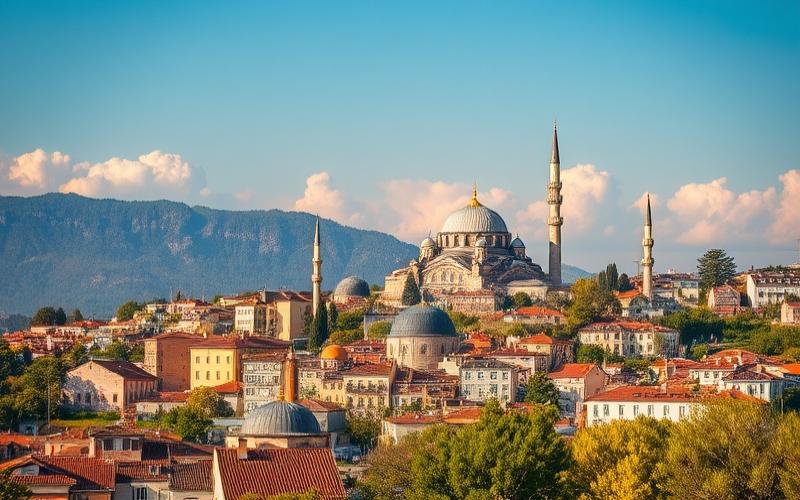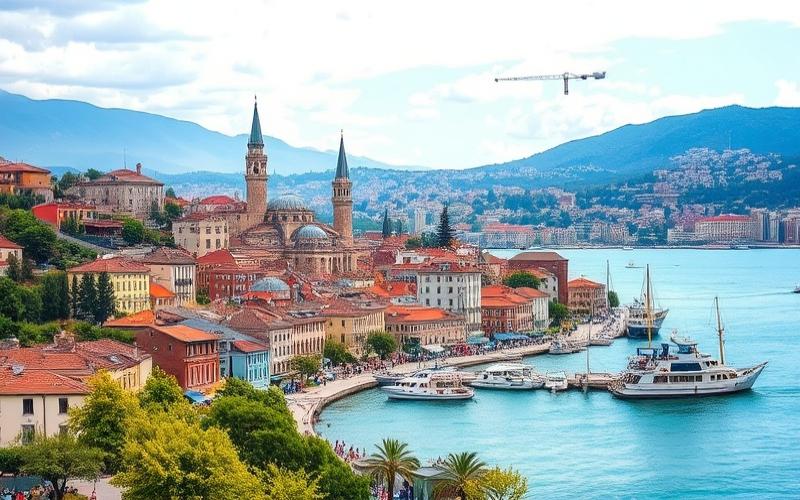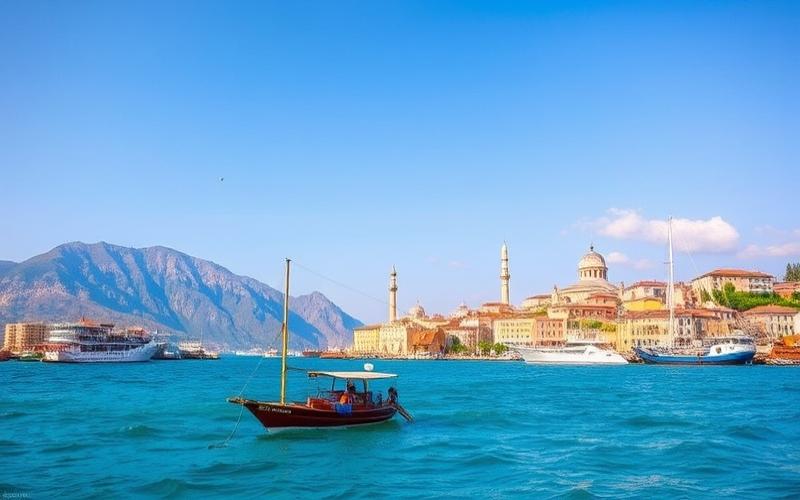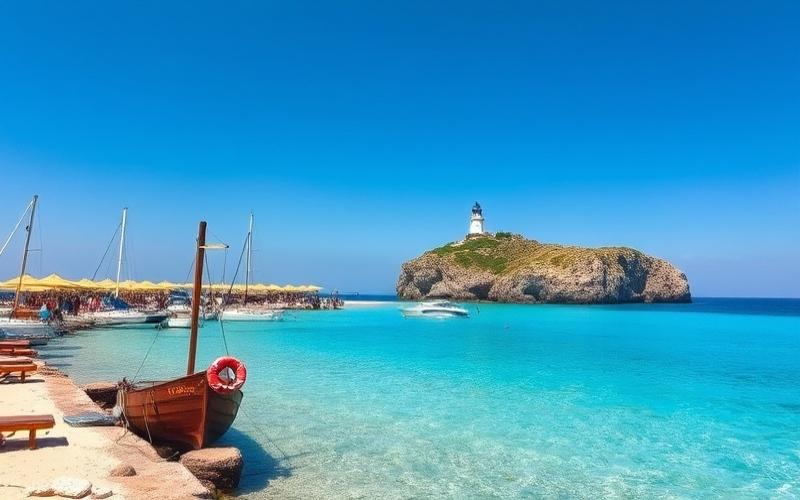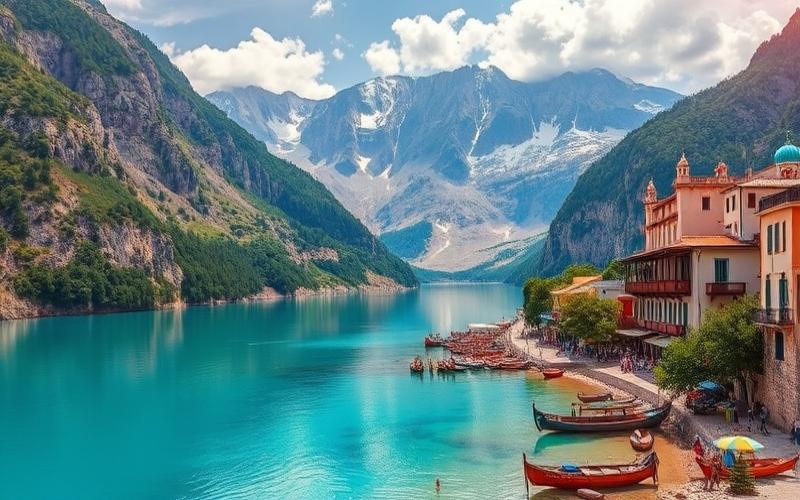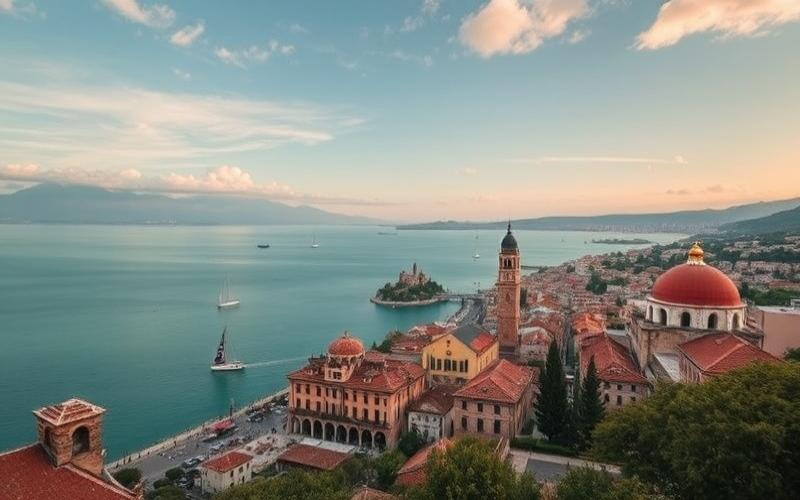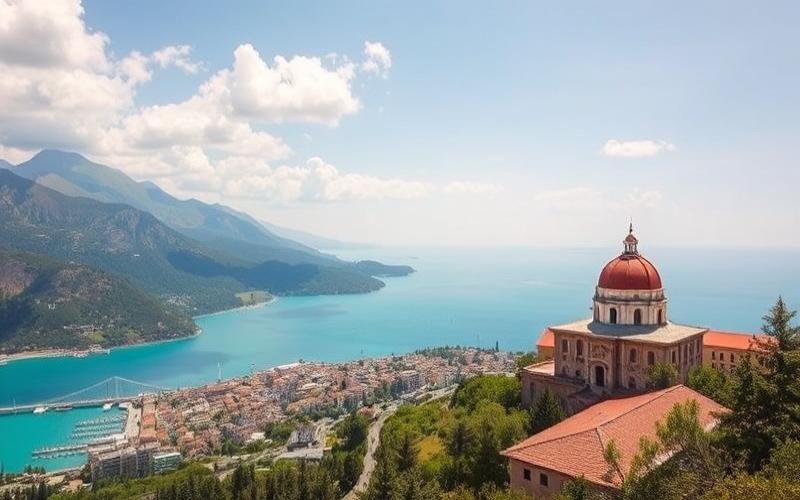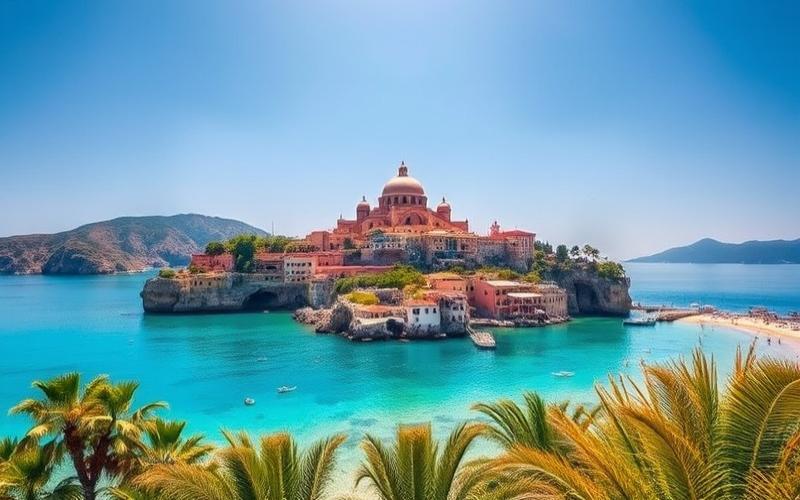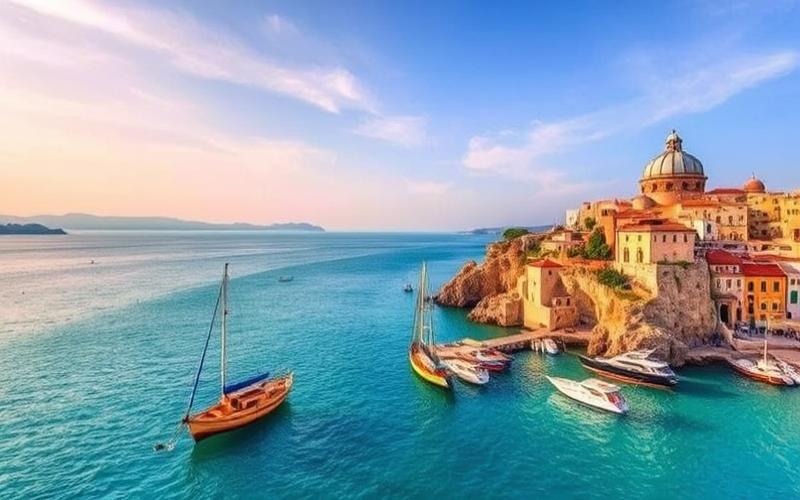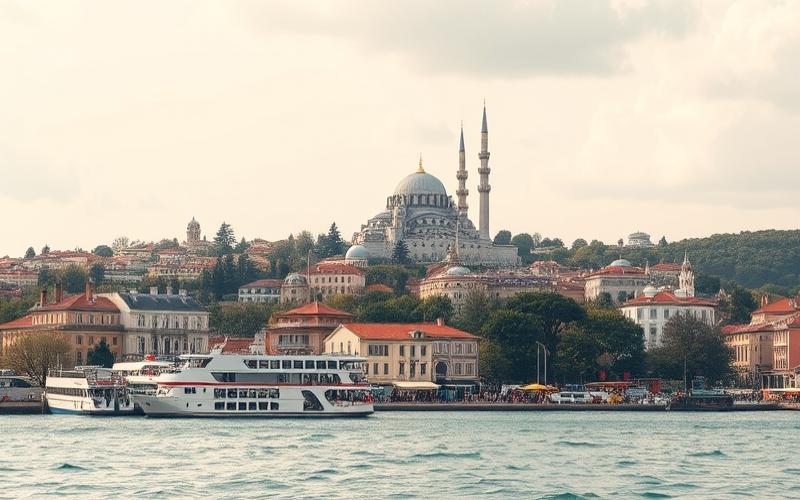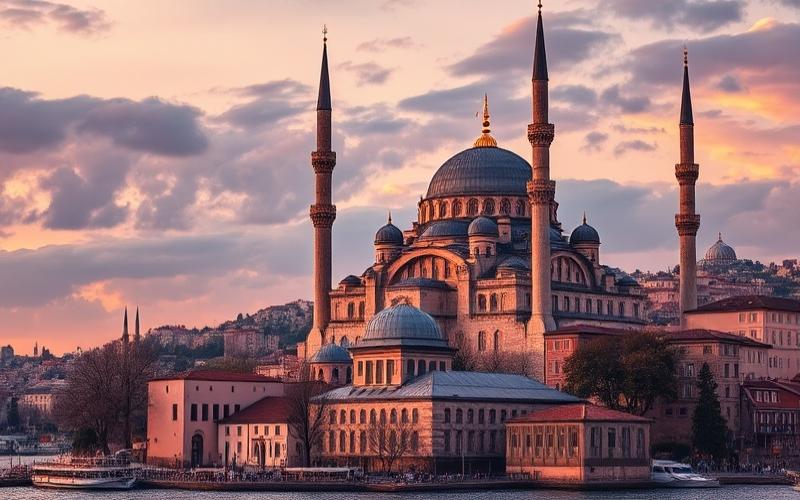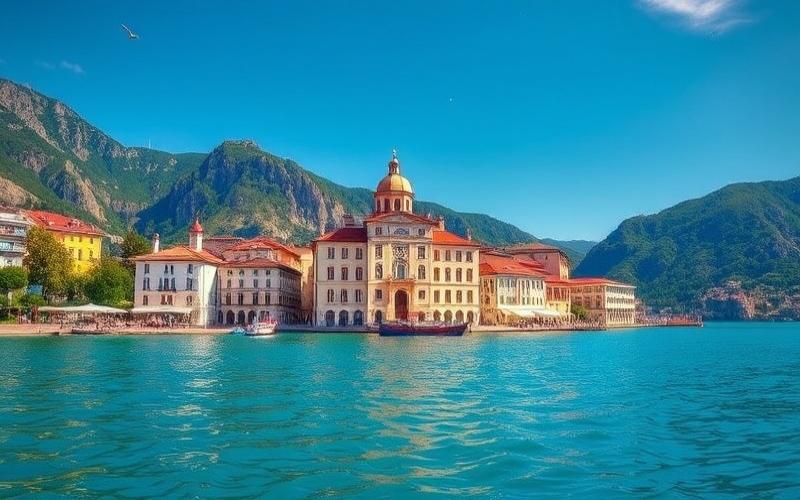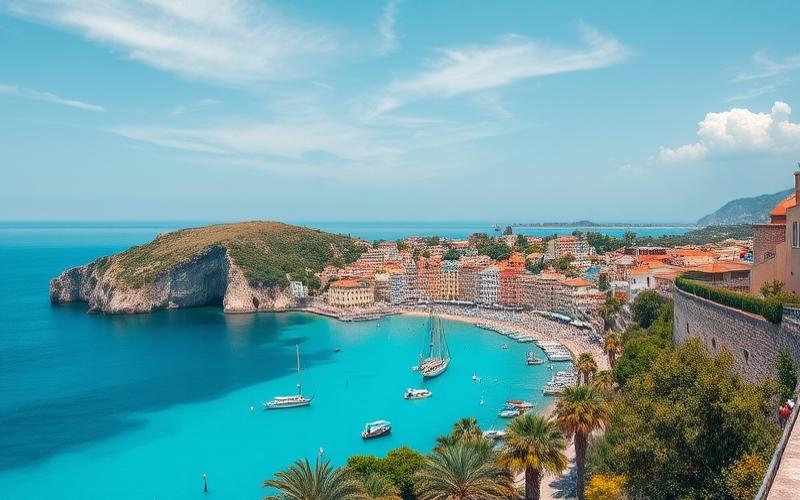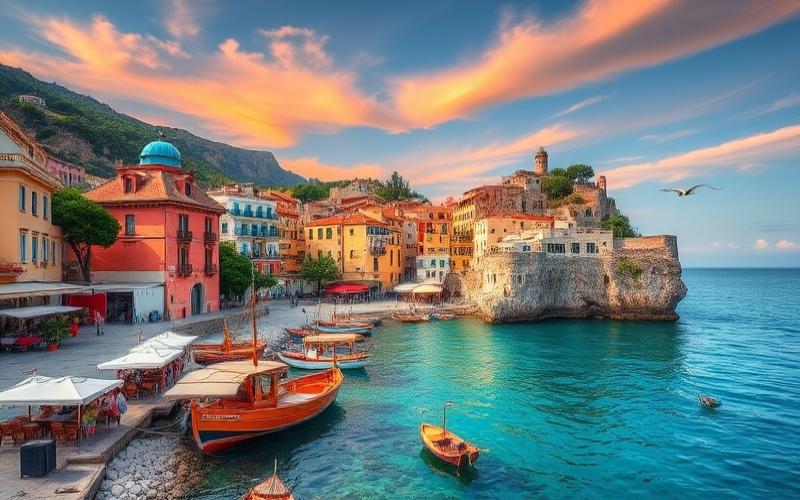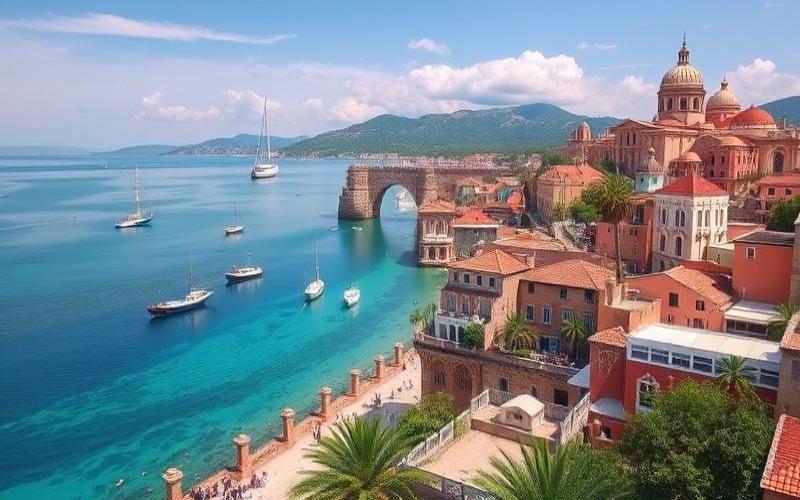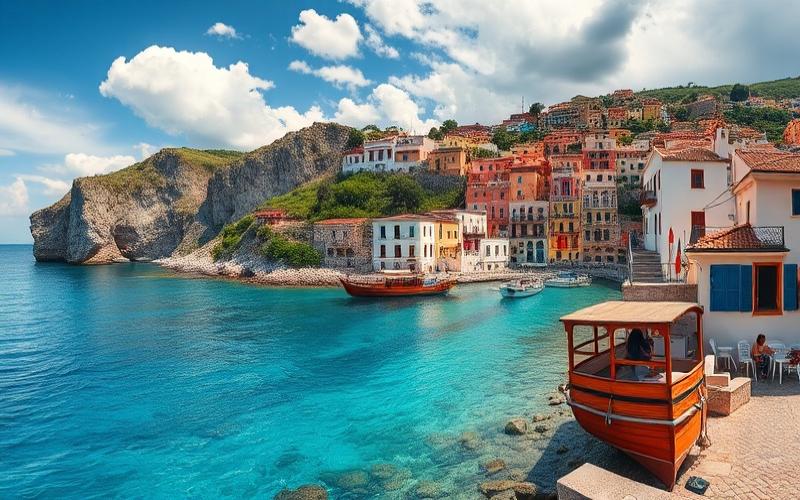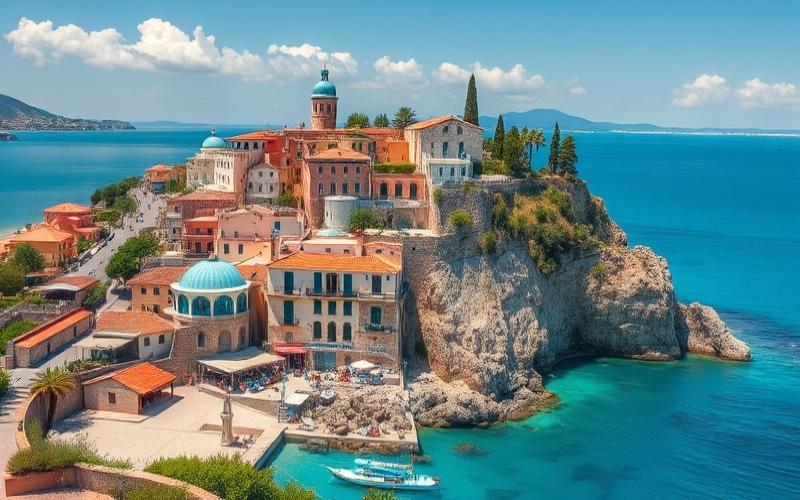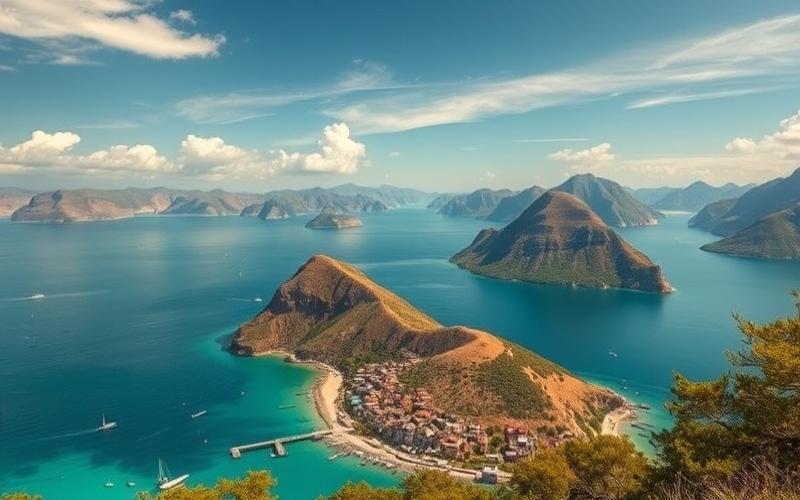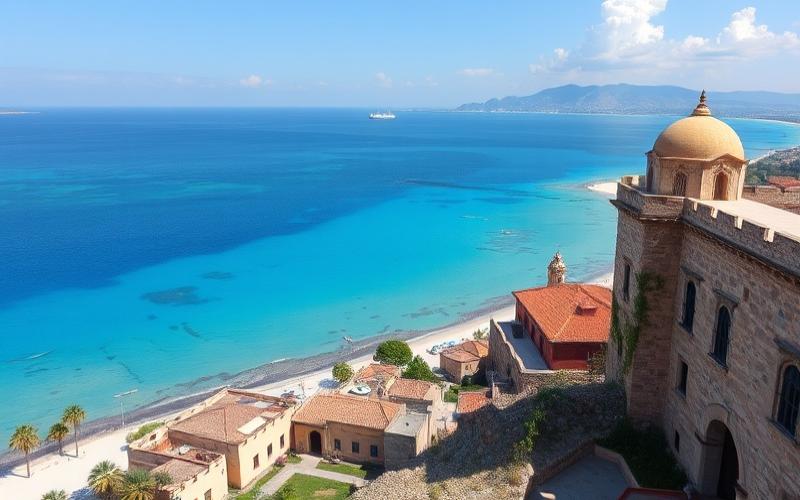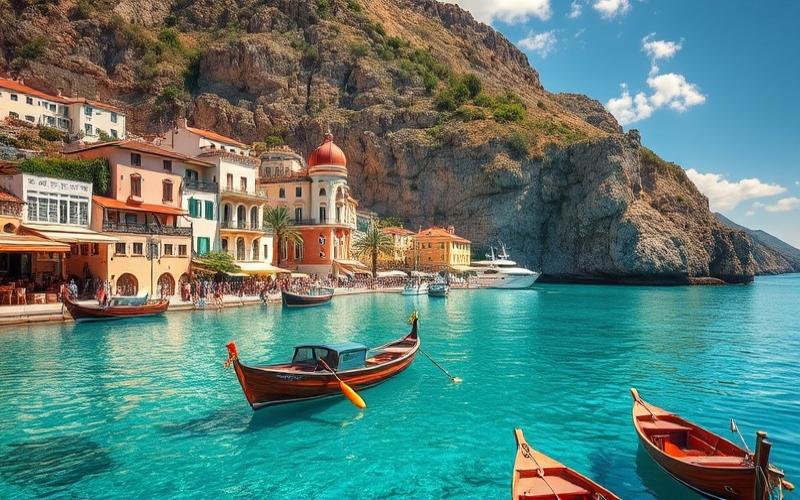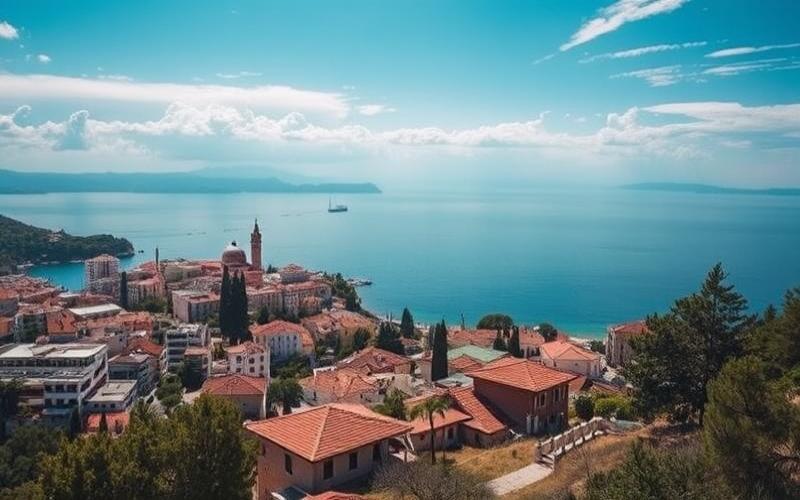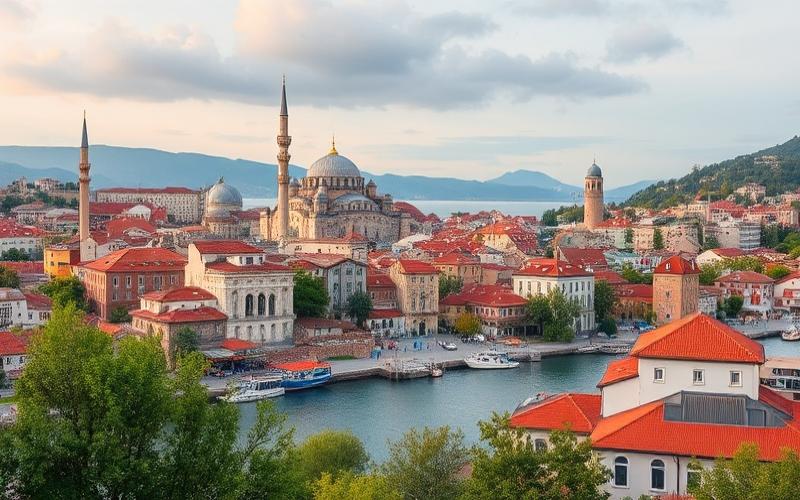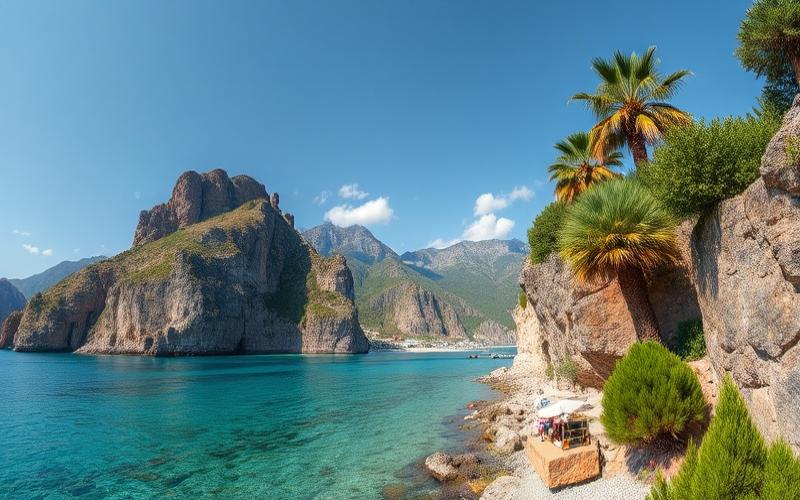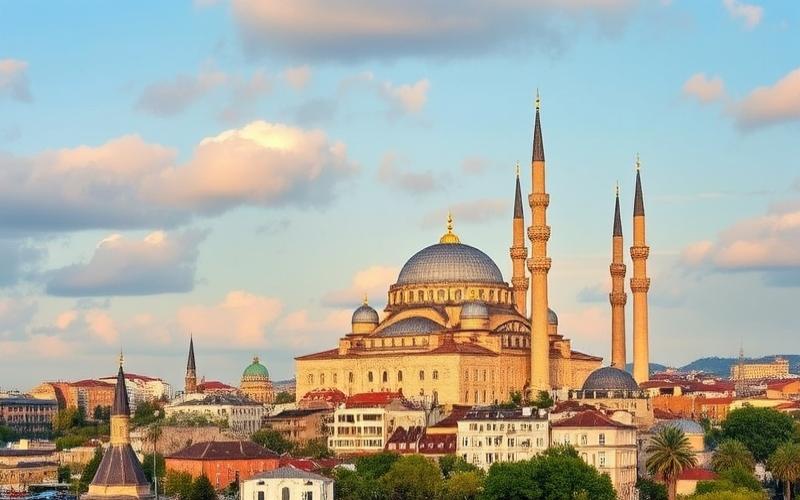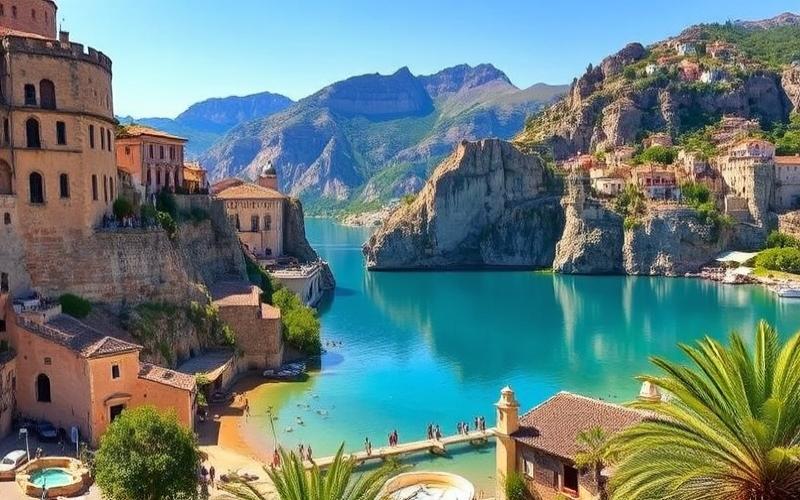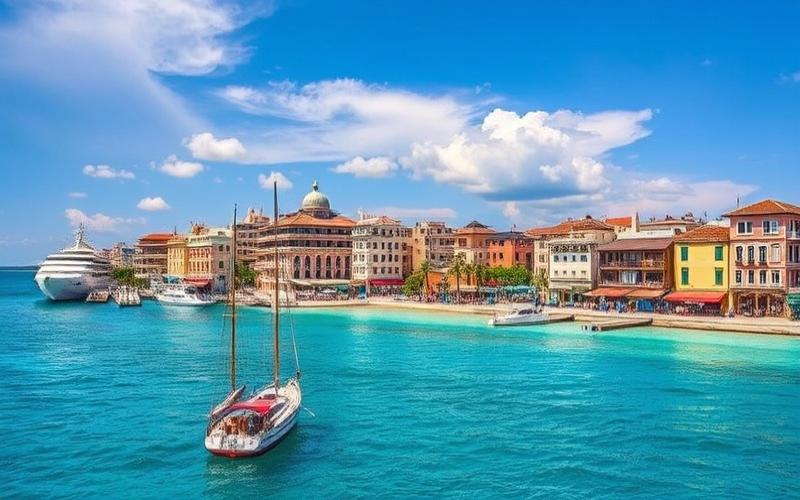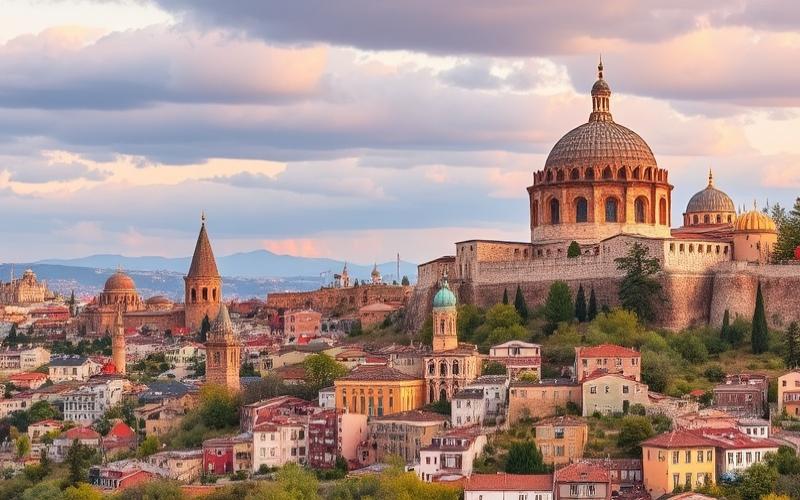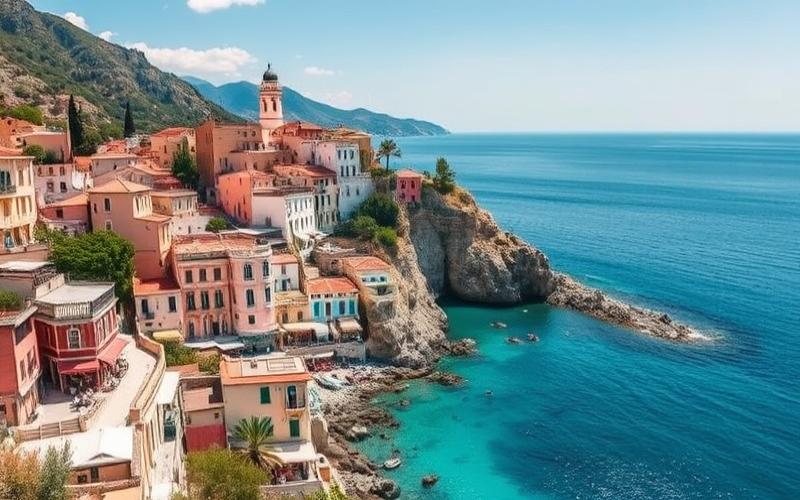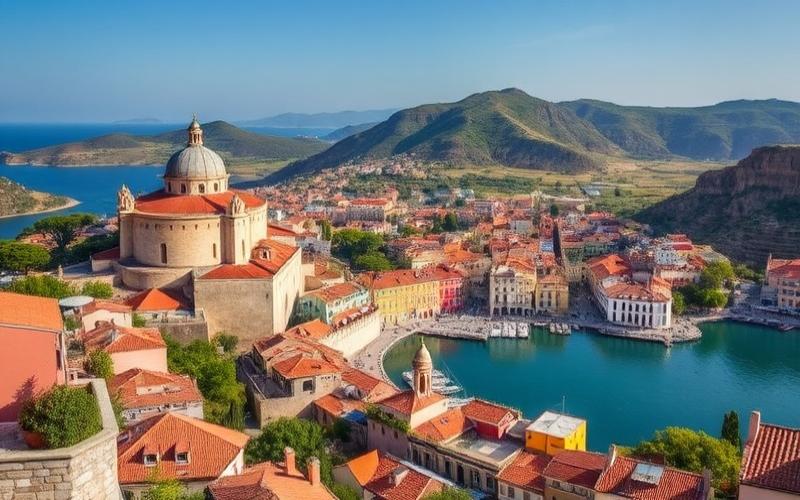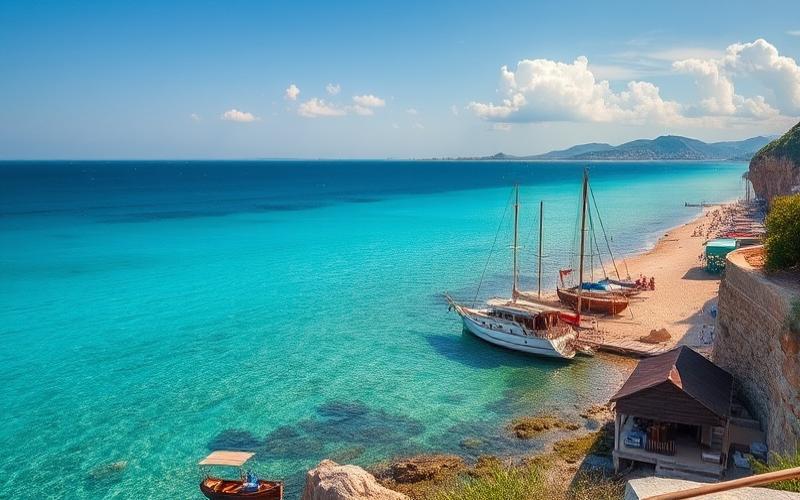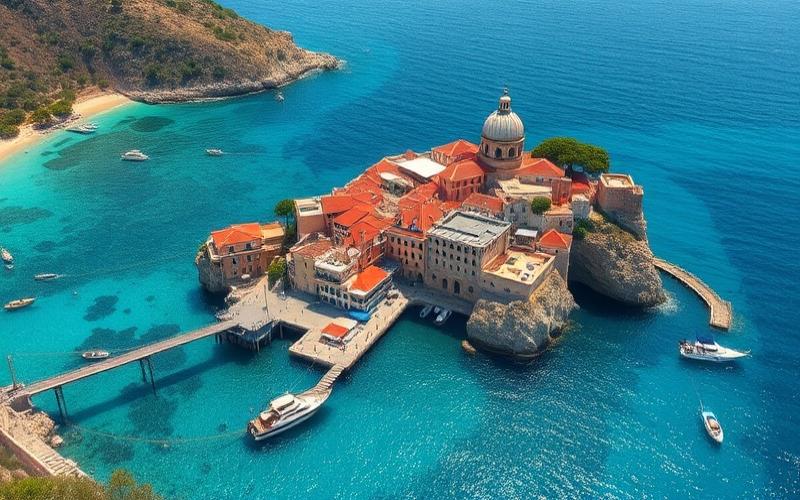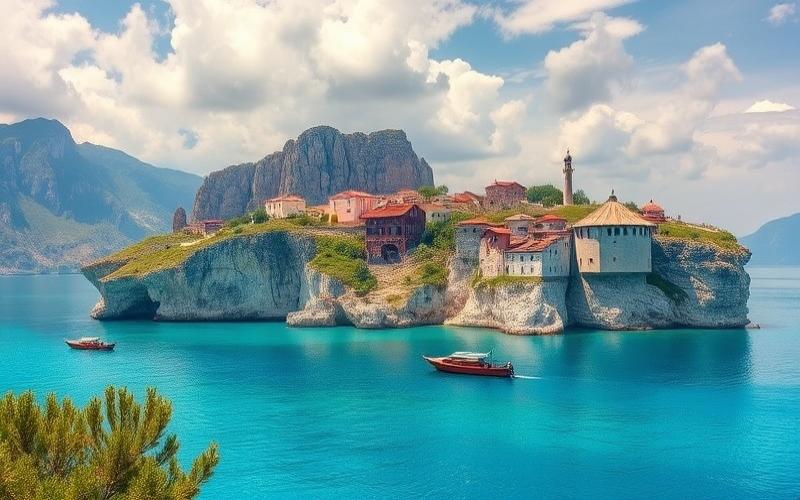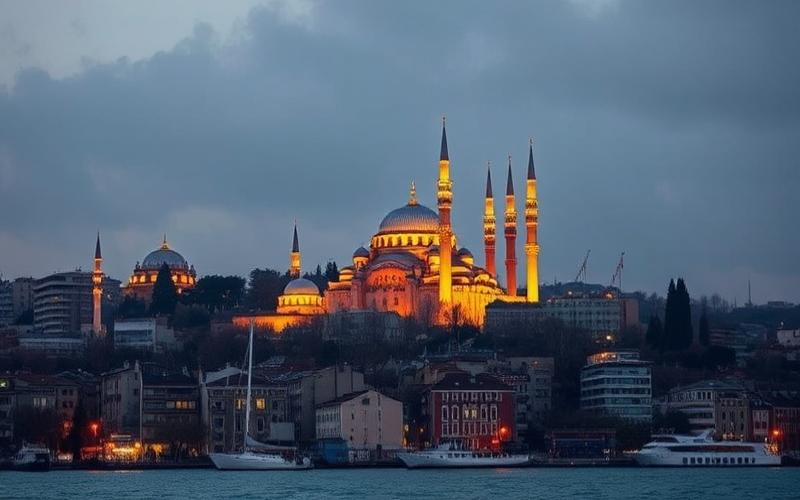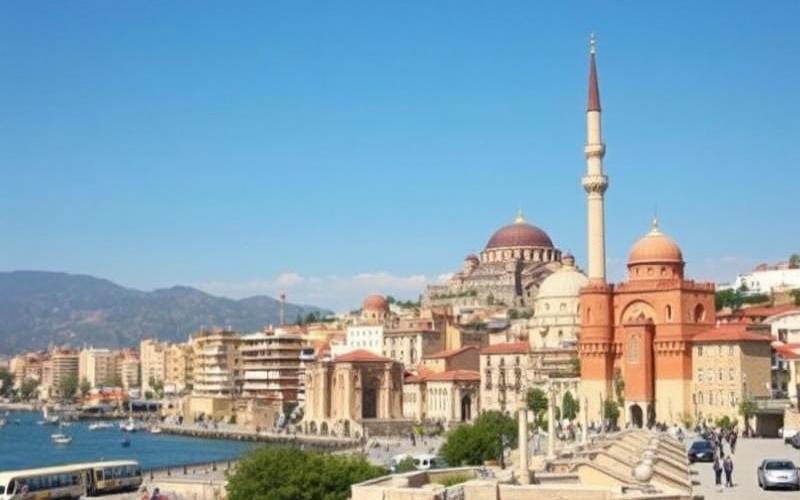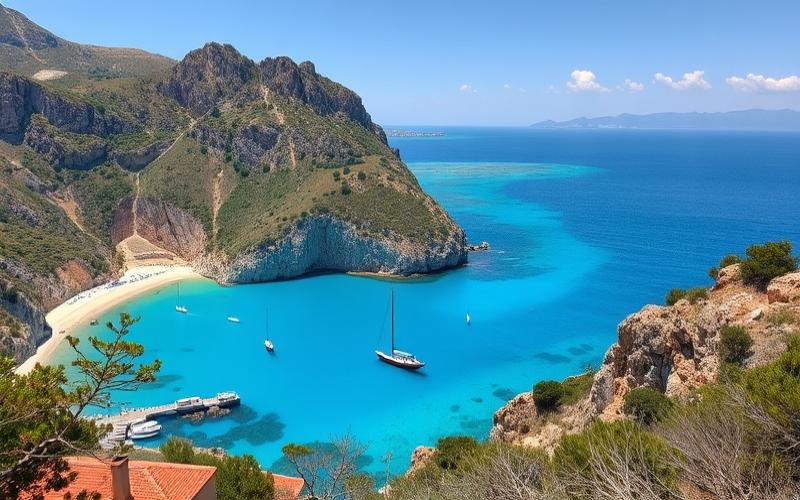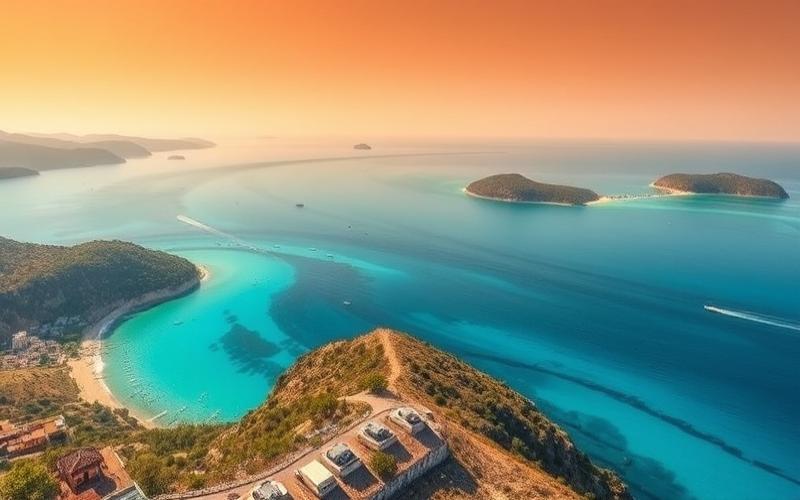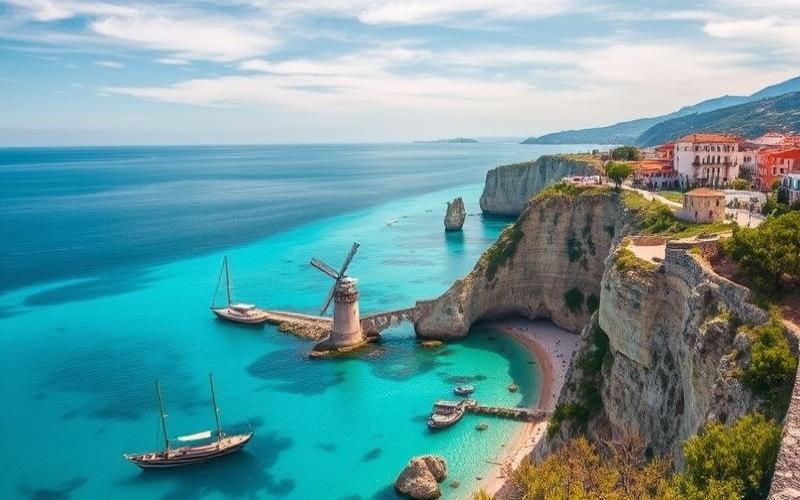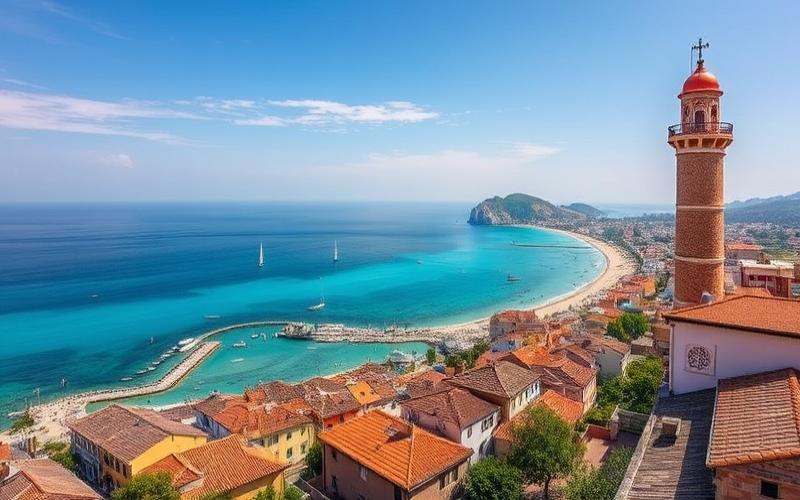
 Published on and written by Cyril Jarnias
Published on and written by Cyril Jarnias
Located at the crossroads of two continents, Turkey’s millennia-old history is a fascinating narrative of intertwined civilizations and ever-evolving cultures. From the remnants of the Hittites to the imposing legacy of the Ottoman Empire, this land stands as a silent witness to Greco-Roman, Byzantine, and Islamic influences that shaped its complex identity.
Today, as a modern republic, Turkey continues to develop while preserving its deep-rooted traditions and rich mosaic of diversity. Let yourself be drawn into a captivating journey to the heart of this land where East meets West, exploring its historical, social, and cultural dynamics that still resonate through its landscapes, monuments, and people.
From Origins to the Emergence of Modern Turkey
Major Historical Periods Leading to Modern Turkey
Decline of the Ottoman Empire
In the 16th century, the Ottoman Empire reached its peak under Suleiman the Magnificent. Subsequently, a series of less competent sultans and failing centralization gradually weakened imperial power.
- The sultan’s authority eroded in favor of the grand vizier, undermining political cohesion.
- Military reforms (devşirme and janissaries) disrupted traditional balances, reducing the influence of the Turkish nobility and depriving the state of significant fiscal resources.
Tanzîmât Reforms (19th Century)
The Tanzîmât (“reorganization”) refers to a broad modernization movement between 1839 and 1876 aimed at adapting the empire’s political, legal, and administrative structures:
- Abolition of traditional tax privileges
- Reform of the judicial system
- Legal equality for all subjects
- Military modernization inspired by European models
| Domain | Measures Taken |
|---|---|
| Administration | Increased centralization |
| Justice | New civil code |
| Military | Recruitment & training |
| Taxation | Tax standardization |
Despite these efforts, power remained contested by various social groups; some elites demanded greater autonomy or a constitution.
World War I & Dissolution
Aligned with the Central Powers during World War I, the Ottoman Empire suffered several decisive military defeats.
From 1918 onward, it was gradually dismantled by the Allied powers. Turkish nationalists rejected the Treaty of Sèvres, which planned its partition.
Mustafa Kemal Atatürk: Foundation and Modernization
Mustafa Kemal Atatürk organized the national resistance during the Turkish War of Independence (1919-1922).
In October 1923, the Republic of Turkey was proclaimed, with Ankara as its capital.
- Abolition of the caliphate (1924)
- Establishment of a strictly secular state: complete separation of religion and state
- Adoption of the Swiss civil code replacing Islamic law
- Introduction of universal male and then female suffrage; civil rights extended to women
- Language reform with a switch to a Latin-based alphabet instead of the Ottoman Arabic script
- Massive development of a modern public education system
| Axis | Concrete Examples |
|---|---|
| Political | Limited multi-party system |
| Social | Right to education for all |
| Economic | Supported industrialization |
Political and Social Challenges in the Early Decades
- Religious opposition to rapid secularization
- Multiple attempted military coups in response to internal political tensions or emerging multi-party politics (1960s-1980s)
Contemporary Evolution of Turkish National Identity
Modern Turkish identity is built around the following principles:
- Institutional secularism despite a partially conservative society on certain religious aspects.
- Primacy given to the “Kemalist legacy” but growing contestation since the 2000s with a relative return of religious influence in some public spaces.
- Regional diplomatic assertion while maintaining a balance between Western/modernizing heritage and Anatolian/Ottoman particularisms.
The trajectory toward “modern Turkey” thus oscillates between the revolutionary continuity inherited from Atatürk—centered on national unity—and successive adaptations to internal social changes as well as contemporary geopolitical challenges.
Good to Know:
The history of modern Turkey has its roots in the end of the Ottoman Empire, marked by its gradual decline and the Tanzîmât reforms in the 19th century, which aimed to modernize the empire under European influence. World War I precipitated its dissolution, after which Mustafa Kemal Atatürk played a central role in founding the Republic of Turkey in 1923. Atatürk introduced radical reforms to transform Turkish society, such as the secularization of the state, abolition of the caliphate, modernization of the education system, adoption of the Latin alphabet, and women’s emancipation. Despite these advances, the early republican decades were marked by political and social tensions, exacerbated by debates on Turkish national identity, pitting traditional values against reformist ideals. Today, Atatürk’s legacy remains powerful and continues to influence the political and social scene, despite contemporary challenges testing this ever-evolving national identity.
From the Ottoman Empire to the Turkish Republic
The Ottoman Empire, founded in the late 13th century, dominated a vast region stretching from Southeastern Europe to North Africa and the Middle East, with Constantinople (Istanbul) as its capital from 1453. At its peak under Suleiman the Magnificent (1520-1566), it represented the primary political, military, and economic power of the Eastern Mediterranean and the Balkans. The empire was distinguished by its religious and ethnic diversity as well as a decentralized administrative system that ensured its longevity.
Key Structural Elements of Ottoman Influence
- Control of trade routes between Europe and Asia.
- Administrative model based on millets (autonomous religious communities).
- Cultural influence blending Turkish, Arab, Persian, and European elements.
- Capitulations granted to Western powers to foster trade.
Decline and Decadence
The decadence began in the 17th century with a series of internal crises (political, financial), military defeats against European powers (notably the failed siege of Vienna in 1683 and the Peace of Karlowitz in 1699), and the rise of nationalism in the Balkans. The weakening continued throughout the 19th century under the weight of:
- Wars against Russia.
- Gradual territorial losses in the Balkans.
- Armenian, Arab, or Greek independence movements.
Key Events Leading to Dissolution
| Date | Key Event | Main Impact |
|---|---|---|
| 1878 | Congress of Berlin | Massive loss of Balkan territories |
| 1908 | Young Turk Revolution | Limited constitutionalization |
| 1912–1913 | Balkan Wars | New territorial losses |
| 1914–1918 | World War I | Total defeat |
| October 1918 | Armistice of Mudros | Official end of hostilities |
| August 1920 | Treaty of Sèvres | Planned dismemberment |
In the aftermath of the world conflict: The dismantling was accelerated by foreign occupations—including that of Istanbul—while a national resistance led by Mustafa Kemal Atatürk developed.
Atatürk’s Role in the Republican Foundation
- Organization of a nationalist movement from Samsun in May 1919 and then Ankara.
- Military victory against Greek forces during the Turkish War of Independence (1919–1922).
Major Dates of the Transition
- Abolition of the sultanate: November 1922
- Official proclamation: Republic of Turkey on October 29, 1923
- Abolition of the caliphate: March 1924
Atatürk’s Modernizing Reforms
Political
- Establishment of a parliamentary republican regime
- Adoption of a secular constitution
- Suppression of Sufi religious orders
Social
- Complete replacement of Islamic law with a civil code inspired by the Swiss one
- Clothing restrictions to symbolize a break with Ottoman tradition (e.g., mandatory wearing of Western hats)
- Mass introduction of education for girls/boys
Economic
- Partial nationalization of key banks/infrastructure
- Industrial incentives; creation of large public enterprises
Major Effects on Turkish Society
- Abrupt transition to a centralized nation-state based on Turkish language/culture
- Deep secularization of state and educational institutions
- Persistent tensions between defenders of Islamic tradition and supporters of Kemalist reforms
Notable Figures
- Mustafa Kemal Atatürk – founding leader & first president
- İsmet İnönü – military/political right-hand man during the independence war and later presidential successor
The period thus marks a radical break with centuries of Ottoman imperial heritage to forge a new modern state seeking its identity between East and West.
Good to Know:
The transition from the Ottoman Empire to the Turkish Republic was marked by the 1908 revolution and entry into World War I alongside the Central Powers, leading to the Empire’s dissolution after its defeat in 1918. Mustafa Kemal Atatürk played a central role in the Turkish War of Independence (1919-1923), resulting in the founding of the Republic of Turkey on October 29, 1923. Atatürk initiated a series of radical reforms to modernize the country: abolition of the caliphate in 1924, adoption of the Western legal system, education reform, and change from the Arabic to the Latin alphabet in 1928. These measures profoundly transformed Turkish society, promoting secularism and accelerating industrialization, while clothing reform and women’s equality, with the granting of voting rights in 1934, altered social and cultural dynamics.
Colonial Influences and Historical Dominations
The territory of present-day Turkey has experienced several major periods of foreign domination, each leaving deep marks on its cultural, economic, and political development.
Main Periods of Domination and Foreign Influences:
- Antiquity:
- Hittite, Persian, Greek, then Roman domination over Anatolia.
- The Eastern Roman Empire (Byzantium) made Constantinople a radiant capital.
- Byzantine Empire (4th–15th century):
- Christian Orthodox domination over the region.
- Urban and architectural development (churches, palaces).
- Transmission of Roman law and lasting influence on administration.
- Seljuk then Ottoman Turkish Conquest (11th–15th century):
- Gradual arrival of Turks from Central Asia.
- Final fall of Constantinople in 1453 by Mehmed II.
| Empire/Power | Approximate Period | Main Influence |
|---|---|---|
| Hittites/Persians/Greeks/Romans | Antiquity | Ancient urbanism, religious syncretism |
| Byzantines | 4th–15th c. | Orthodoxy, administrative centralization |
| Seljuks | 11th–13th c. | Gradual introduction of Islam |
| Ottomans | 15th–early 20th c. | Profound Islamization, imperial centralization |
Impact of the Byzantine and Ottoman Empires:
Cultural:
- Byzantine heritage visible in monuments like Hagia Sophia in Istanbul.
- The Ottomans transformed the city into a multicultural crossroads; partial coexistence between Muslims, Christians, and Jews.
- Artistic richness: Ottoman calligraphy, monumental mosques.
Economic:
- Strategic control of trade routes between East and West under both empires.
- Spectacular urban growth of Istanbul under the Ottomans.
Political:
- Extreme centralization of power, but also relative autonomy for certain religious communities under the millet system among the Ottomans.
Role of European Powers from the 18th Century:
Increasing economic pressures via external debts contracted by the Sublime Porte from Western European states.
Direct or indirect military interventions during the “Great Game” with Russia or in the Balkan Wars.
After World War I:
- Allied occupation of Istanbul (1918–1923), planned dismemberment via the Treaty of Sèvres in 1920.
- Direct involvement in the final Ottoman decline and the projected partition of Turkish territory post-war.
Birth of the Modern Turkish Republic:
Summary list of key steps:
- War of Independence led by Mustafa Kemal Atatürk against Greeks then Western Allies.
- Signing of the Treaty of Lausanne (1923), definitively setting modern national borders.
- Official proclamation of the Republic with Ankara as capital; rapid adoption of secular institutions inspired by Western Europe.
Major Contemporary Traces Left by These Multiple Dominations:
Non-exhaustive list:
- Architectural heritage blending Byzantine churches transformed into Ottoman mosques;
- Fusion cuisine derived from Greek/Balkan as well as Arab-Persian origins;
- Persistent ethnic plurality despite homogenizing policies in the 20th century;
- Modern republican institutions, heirs to both French Jacobinism promoted by Atatürk and certain administrative frameworks inherited from Byzantines/Ottomans;
- Public space marked by both Islamic and Western symbols (official secularism vs. varied social practices);
- Geopolitical dynamics where an ambivalent relationship persists towards both Europe and the Arab-Muslim world—a direct reflection of a multi-century past shared between Eastern and Western influences.
Current sociopolitical dynamics are still shaped by this dual imperial heritage—oscillating between Islamo-nationalist conservatism stemming notably from the Ottoman legacy, and secular aspiration largely inspired by the European model imported in the early 20th century.
Good to Know:
The territory of present-day Turkey has been marked by numerous foreign dominations, the most influential being those of the Byzantine Empire and the Ottoman Empire, which significantly shaped its cultural, economic, and political development. The Byzantine Empire, heir to the Eastern Roman Empire, preserved and transmitted many of its values and governmental structures, leaving iconic monuments like Hagia Sophia in Istanbul, while the Ottoman Empire, at its peak, unified and diversified the region, introducing centralized administration and dynamic trade exchanges throughout Europe and Asia. European powers, including France, England, and Russia, also played a crucial role, especially during the decline of the Ottoman Empire, contributing to its partition by the Treaty of Sèvres in 1920. These interventions laid the foundations for the Republic of Turkey, founded in 1923 by Mustafa Kemal Atatürk, who undertook a series of radical modernizing reforms to Westernize the country, including the adoption of the Latin alphabet and the secularization of the state. Today, these diverse influences are manifested in the richness of Turkey’s cultural heritage, its varied architecture, and its blend of Ottoman and republican traditions, as well as in modern sociopolitical challenges related to the coexistence of these contrasting legacies.
Disclaimer: The information provided on this website is for informational purposes only and does not constitute financial, legal, or professional advice. We encourage you to consult qualified experts before making any investment, real estate, or expatriation decisions. Although we strive to maintain up-to-date and accurate information, we do not guarantee the completeness, accuracy, or timeliness of the proposed content. As investment and expatriation involve risks, we disclaim any liability for potential losses or damages arising from the use of this site. Your use of this site confirms your acceptance of these terms and your understanding of the associated risks.


